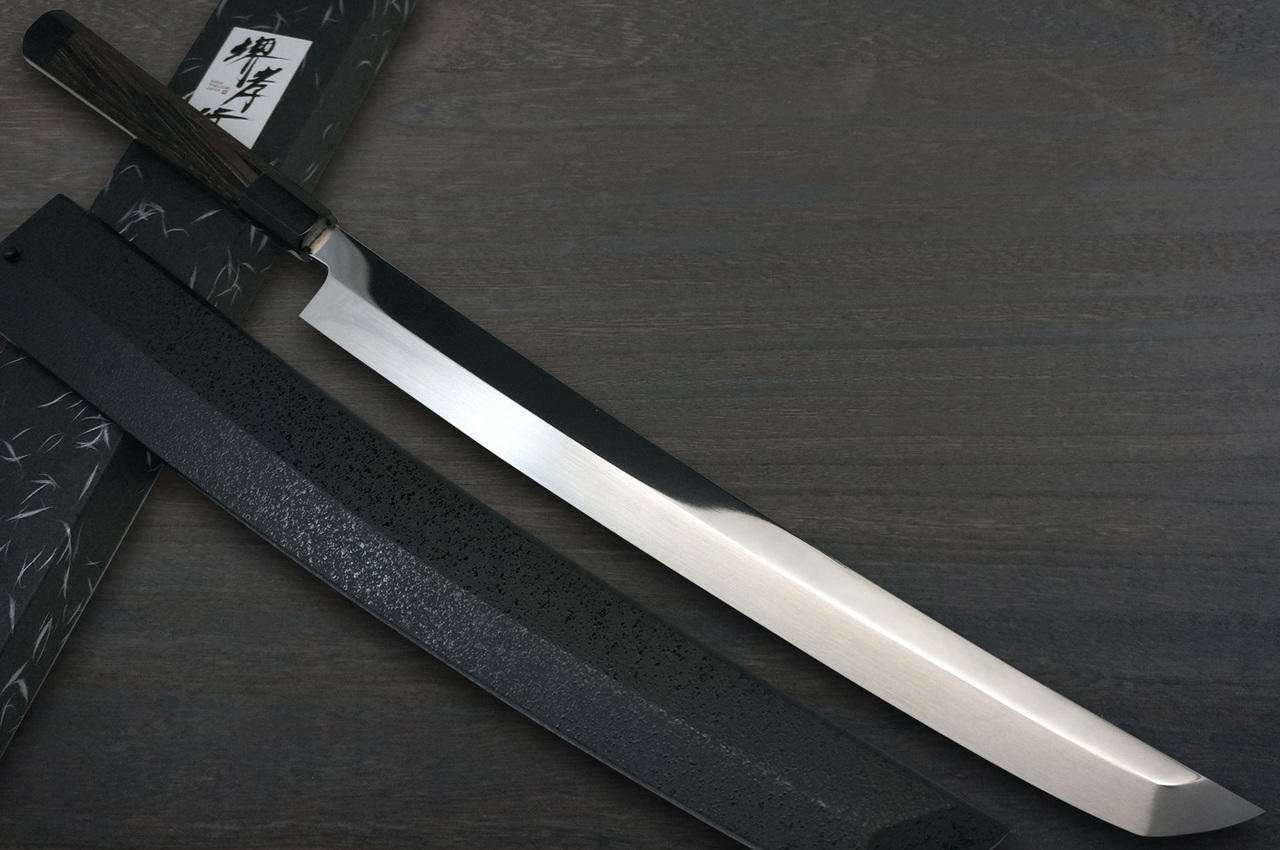
Japanese Blade Steel Production Part 1
img by : https://www.hocho-knife.com/
Honyaki knives are forged using the same methods as traditional Japanese swords. Today, they can only be made by a few highly skilled craftsmen in Japan. Our craftsmen combined have over 50 years of experience crafting Honyaki knives, and we use the highest quality steel to ensure you get a high-quality knife that will perform to your needs and expectations. The steels we use, including white steel, blue high carbon steel, or VG10 steel features Rockwell hardness ratings of 64 to 65, and during production is heated to temperatures of over 1000 to 2000°. They’re then quenched in cool water to harden the steel, resulting in knives of the highest caliber. The literal translation of the word Honyaki is “true forged”, and these knives are highly sought after and prized by professional chefs for their superior cutting edge and hardness. Our Honyaki knives blend functional and aesthetic, and at first look, it’s clear that the knives are more than just superior cutting instruments, but pieces of art. The finest steel, beautifully polished, coupled with handcrafted handles with high-quality Japanese wood are just some of the features of our Honyaki knives. Our knives are single bevel, cut through ingredients effortlessly which helps preserves the ingredient’s flavor, look, and texture. We highly recommend a Honyaki knife for skilled chefs.
Ginsan / Ginsan-Ko
Ginsako knives combine traditional knifemaking methods with modern metallurgy. The process incorporates both high carbon steel and stain-resistant metallic elements. The end product is a knife with a Rockwell hardness rating of 63-64 which offer both the benefits of traditional Japanese high carbon knives with stainless steel properties.
Namiuchi
Namiuchi, meaning “wave forged”, are knives that are made with “aoko” Blue Steel #1 which features a Rockwell hardness of 63 to 64. These knives are forged with iron to create beautiful wave-like patterns which require the craftsmanship of very highly skilled knifemakers. While beautiful and unique in its appearance, Namiuchi knives provide exceptional performance, and are a perfect option for people looking for a reliable knife with a unique look.
R-2 / SG-2
R-2 steel, also known as SG-2, stands of Super Gold 2. This type of steel was developed by Takefu Special Steel Co., a company based in Echizen, Japan. The company originally developed Super Gold steel, but later enhanced it and named the new development Super Gold 2. The Super Gold Series is based on modern powdered steel metallurgy that allows for the production of unique materials that are impossible to get through traditional methods such as melting. SG-2 steel contains the following elements:
- Carbon – 1.25 – 1.45%
- Vanadium – 1.80 – 2.20%
- Chromium: 14.00 – 16.00%
- Molybdenum – 2.30 – 3.30%
Similar to ZDP-189 metal, SG-2 has high edge retention but less wear resistance, making it easier to sharpen. The reason SG-2 steel is also referred to as R2 is because Echizen blacksmiths initially referred to SG-2 as R2. As both names were used so interchangeably, both were coined as acceptable names. Both steels are exactly the same, and are forged through traditional methods of craftsmanship coupled with modern metallurgy at extremely high temperatures to create a steel composition that is durable enough to be used in industrial conditions. This steel features a Rockwell hardness rating of 64 to 65 and will keep its sharp edge for a long period of time. SG-2 Semi-Stainless Steel is a high carbon steel that represents maximum cutting performance and edge retention like no other. The added stainless steel results in higher durability and easier maintenance. SG-2 knives are perfect for professionals who use knives daily with high frequency.
Suminagashi
Suminagashi, meaning “floating ink”, refers to the marbled patterns on the knives. These knives are made of iron and utilize the most intricate techniques, with multiple complicated processes required such as forging, layering, and hammering all combined to create an exquisite finish. These knives are truly works of art and are made with the best materials. The marbled patterns extend from the tip of the knife to its heel. With every sharpen, new patterns are unveiled. Only the most skilled of the craftsman can forge these knives, piece by piece, to not only create a beautiful knife, but one that provides exceptional cutting performance as well.
